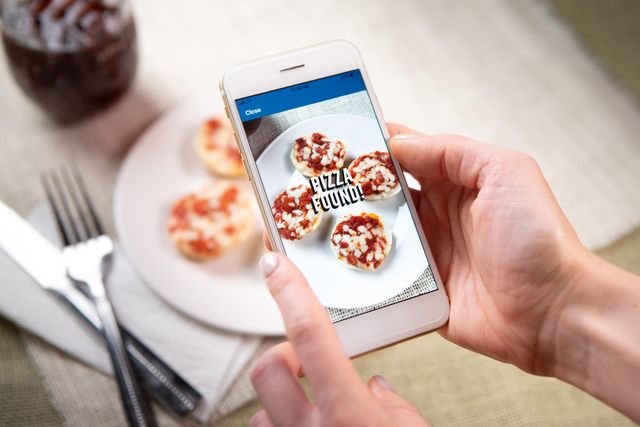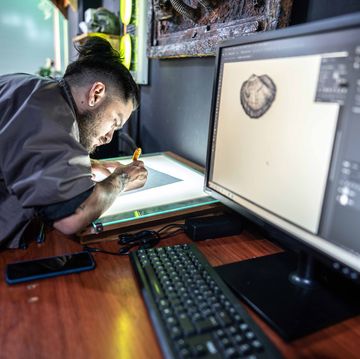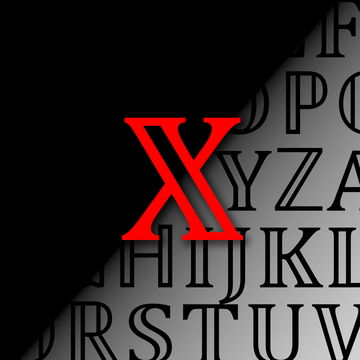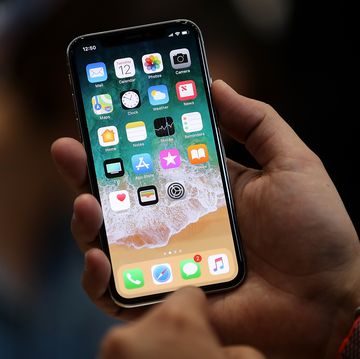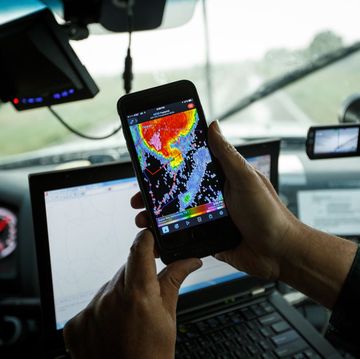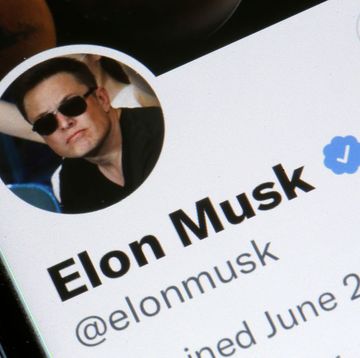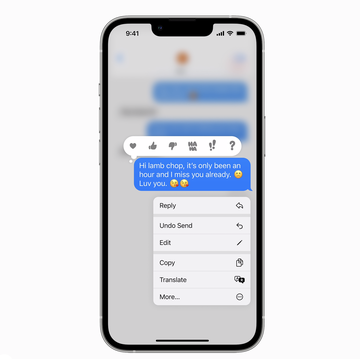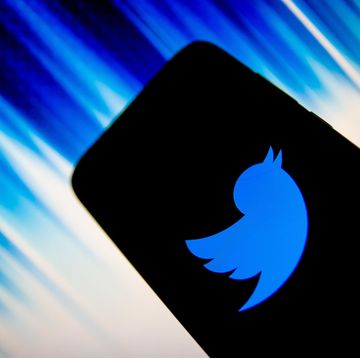Earlier this month, popular pizza purveyor Domino's unveiled the latest in a long line of technological PR stunts: Points for Pies. Simply download the Domino's app and use it to take a picture of a pizza, any pizza. For every picture the app identifies as pizza—Domino's or otherwise—you get ten points (with a limit of ten points per week). Once you get 60 points, you'll be entitled to one free medium two-topping pizza from Domino's.
It's a fun little gimmick with a timeless enticement (free pizza) and a fun techno hook: The app is powered by artificial intelligence, trained in-house to recognize all breeds of pizza from a homemade pie to a cartoonish dog toy. "This is the first time Domino's is using AI technology like this," Domino's chief digital officer, Dennis Maloney, notes in the program's press release. "It will be running the pizza identification process and is already smart enough to identify all pizza, even if it is a homemade English muffin pizza, a pizza with a hotdog stuffed crust, or a high-end artisan pizza. It can even identify if it's a dog's squeaky pizza toy."
The question is "to what end?" and to ask it will take you down a rabbit hole that goes much, much deeper than selling pizza. It's the rabbit hole we live in now.
Pizza Bot Is Your Boss Now
There is the obvious, straightforward answer as to why this promotion exists: This is a standard loyalty program with some technomagical fairy dust sprinkled on top. The allure of a free pizza is designed to entice you to download the Domino's app, which makes it easier for you to order Domino's. If you order Domino's, you're probably going create an account that includes your name, email address, phone number. On top of all that, the Points for Pies program requires you to think about Domino's, and about opening the app, at least once a week.
But there's something else going on here, because the A.I. component adds a new layer. Like most other machine-learning A.I.s, the Domino's bot "learns" how to do its job by ingesting mountains of human data. Given enough pictures that humans have confirmed to be pizza, an A.I. can learn how to recognize pizza for itself in ways that humans could never wrap our minds around.
Domino's had already engaged in this training prior to the program's launch, as Maloney notes. But the A.I. will also be improving as Points for Pies goes on, as VP of Digital Marketing & Global eCommerce Christopher Thomas-Moore confirmed to Popular Mechanics in a statement: "The future plans will be to continue training the model with successful scans to even further improve its accuracy.”
So why? The app was already good enough to perform its function, otherwise it couldn't have been released. So why spend the resources to make it better unless there's something else going on? And why not find something else? Otherwise those pizza photos, perfect for training an even better robot, are all going to waste instead of generating value for shareholders! Domino's is mum about any future plans for its continually improving A.I., but it's hard to imagine it doesn't have any.
One possibility is that the A.I. may eventually go to work in Domino's vaunted Pizza Tracker, a service first launched in 2008 that claims to track your pizza's journey from order to delivery. The service's authenticity has been questioned many times over the years by customers who have spotted discrepancies and other assorted Truthers. Domino's official line on any reported inaccuracies has been, basically: That's what happens when, regrettably, humans have to be involved. As a spokesperson put it to Fox News in 2017, "The issue is that it does require some human interaction and sometimes humans make mistakes." Maybe not much longer!
Much like the Points for Pies app, however, the Pizza Tracker could itself be a test bed for something else. It doesn't seem too unrealistic that Domino's pie-spotting A.I. could find a use in some sort of automated quality assurance or, at some point in the distant future, part of the foundation of fully automated pizza venture, like some of its competitors have already been toying with. After all, which seems more outlandish: that Domino's is using your pizza pictures to explore the possibility of automating away its workforce, or that Domino's is not using your pizza pictures for anything at all?
Even pizza companies are tech companies now. Thanks, big data.
Paranoia Town, Population: Me
The deeply unsettling conclusion of this line of thinking extends far beyond Domino's. Whether or not Domino's has any plans for improving their pizza-recognition app, nefarious or otherwise, is beside the point. The point is that it could, and that from a company's perspective, it would be a wasted opportunity not to. Worse yet, from our perspective, it's basically impossible to tell one way or the other.
As A.I.s that train themselves on user data continue to proliferate, the difference between an app that captures your data for training versus one that captures it incidentally is indistinguishable unless you're the one behind the scenes. On top of that, the opportunity cost of not feeding mountains of user data to a robot is skyrocketing.
Such a state of affairs lends itself to lines of thinking that are at once conspiratorial and completely rational. Earlier this year, when a meme called the 10 Year Challenge swept Facebook, a similar theory emerged. The challenge asked users to post two side-by-side pictures of themselves ten years apart, ostensibly to show how far we've all come in a decade. Well, many observers realized the 10 Year Challenge also would be terrific training fodder for a facial-recognition algorithm designed to account for aging or to estimate a person's age, as Wired noted.
For what it's worth, Facebook claimed it had nothing to do with starting the meme, but we know all about Facebook's relationship with data mining and its relationship with the truth. It's hard to prove, but even harder to disprove. And it'd be silly to imagine that it isn't happening to some degree or another, somewhere, somehow.
There's an old adage (by internet standards, anyway) that, "If you're not paying for the product, you are the product." While that truism may be a tad reductive, it reflects the broader truth in action: Your data is a resource and someone is using it for profit, even though you won't see a dime and have no say in what that data will ultimately be used to do. For now, the solution might seem as simple as not posting the meme or not using the app, or trying not to mind the exploitation. After all, why should you care?
But as the trend accelerates and spreads across the digital landscape, it will only get harder for all of us to avoid generating data that, once it's fed to the robots, may put your fellow humans out of a job, or worse. It's already pretty much impossible to avoid. Short of burning down the internet and starting fresh (or abolishing the profit motive), sweeping privacy regulation and aggressive fines and taxation may be our only chance to slow the snowball as it rolls.
In the meantime, you can rest assured that your paranoia is at least justified.
